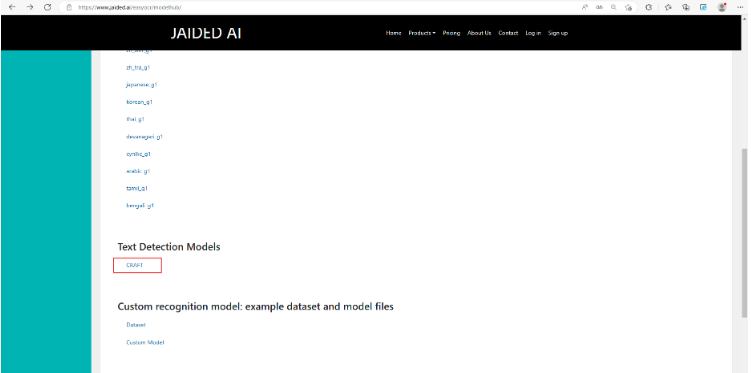
Gradio is an open source Python library for building machine learning and data science demonstrations and web applications.
Official website: https://www.gradio.app/
Gradio is suitable for:
Demonstration customers/collaborators/users/students Machine learning model.
Deployment Quickly create models through automatic sharing links and get feedback on model performance.
Troubleshooting Work interactively with your models during development using built-in manipulation and interpretation tools.
Install the gradient library
pip install gradio -i https://pypi.tuna.tsinghua.edu.cn/simple
To use EasyOCR, you need to install pytorch. You can also use easyocr secretly. Drive the installation of torch related libraries.
pip install easyocr -i https://pypi.tuna.tsinghua.edu.cn/simple
Because EasyOCR uses the trained algorithm, after installing the above library, you need to go to the official website https://www.jaided.ai/easyocr/modelhub/ to download the corresponding trained model file. Mainly the following three files, and extract the files to the C:\Users\Administrator.EasyOCR\model directory. Administrator is the login user name, modify it according to your own situation.


If you don’t encounter the following two problems, it’s best to solve them according to the method.
Note 1: If there are multiple python environments and an installation error occurs, you can add the user parameter to install to the user directory.
pip install easyocr -i https://pypi.tuna.tsinghua.edu.cn/simple --user
Note 2: If the following prompt appears:
OMP: Error #15: Initializing libiomp5md.dll, but found libiomp5md.dll already initialized.
This is because the torch package contains a file named libiomp5md.dll, which is different from the Anaconda environment There is some kind of conflict with the same file, so one needs to be deleted. I renamed libiomp5md.dll under \Anaconda3\Library\bin\ to libiomp5md_old.dll.
After completing the above preparations, it’s time to witness the miracle.
import gradio as gr
import easyocr
import cv2
reader = easyocr.Reader(['ch_sim','en'])
def img2txt(image):
img = r"C:\text.jpg"
cv2.imwrite(img, image)
img_read = cv2.imread(img)
res = reader.readtext(img_read)
print('识别结果为:',res)
txt = ''
if len(res)>0:
for i in res:
txt += i[1]
return txt
interface = gr.Interface(fn=img2txt, inputs="image", outputs="text")
interface.launch()The following picture is shown after running:

Upload a picture and try the effect, as shown below:

The above is the detailed content of How to use Gradio and EasyOCR to build a web application for online text recognition in Python. For more information, please follow other related articles on the PHP Chinese website!




